
Fiat Cronos Revealed
- Nov 28, 2017
- Views : 9090

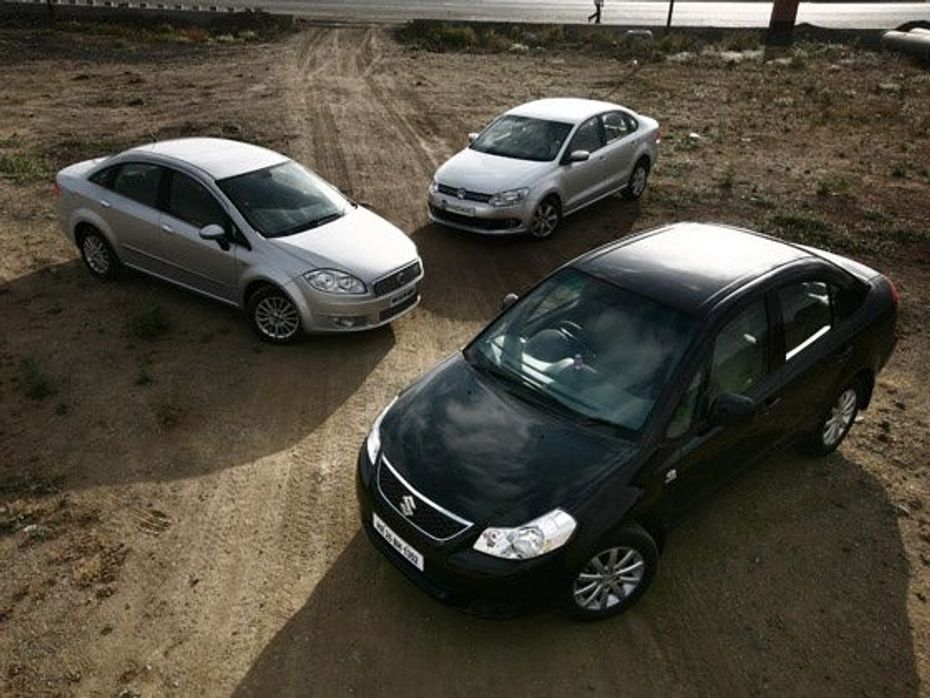
When was the last time you wished you drove a diesel? Just this morning at the fuel station? Nothing to fault with that, the pinch felt while shelling out more money per litre for a fuel that still does not carry you as far a diesel would, is universal and understandable. Diesel as a fuel for private vehicles is seriously coming into its own, and Maruti Suzuki could not have timed the introduction of the DDiS mill in its city sedan better. A move from the country's top carmaker can seldom be ignored, but after all, this is just an engine transplant, right? How much can it really change for a car that has for long been taunted by its hatch-backed stablemates since it couldn't match them in numbers? Besides, while the Honda City may have made life difficult through its three generations for its petrol-powered compact sedan rivals, weren't the Europeans always better with diesels?
Clearly, it’s a tough field that the SX4 DDiS plans to wade through. On one hand there is Fiat Linea Multijet, the popular diesel sedan which can pocket the biggest credit for reviving the Italian powerhouse in India. On the other there is the Volkswagen Vento TDI, based on a World Car of the Year winner – a properly plush car and an all-round performer. But then, few would wish to put their money against Maruti when it comes to understanding the Indian buyer, and giving him the value and peace of mind that he craves from his cars. Set this face-off up in the curious compact sedan boxing ring - where buyers are not willing to part with good sense and practicality, but also wish to have a feeling of being pampered when inside and being appreciated from passers by on the outside - and you have an oil-burning battle royale. On to the ringing bell then.
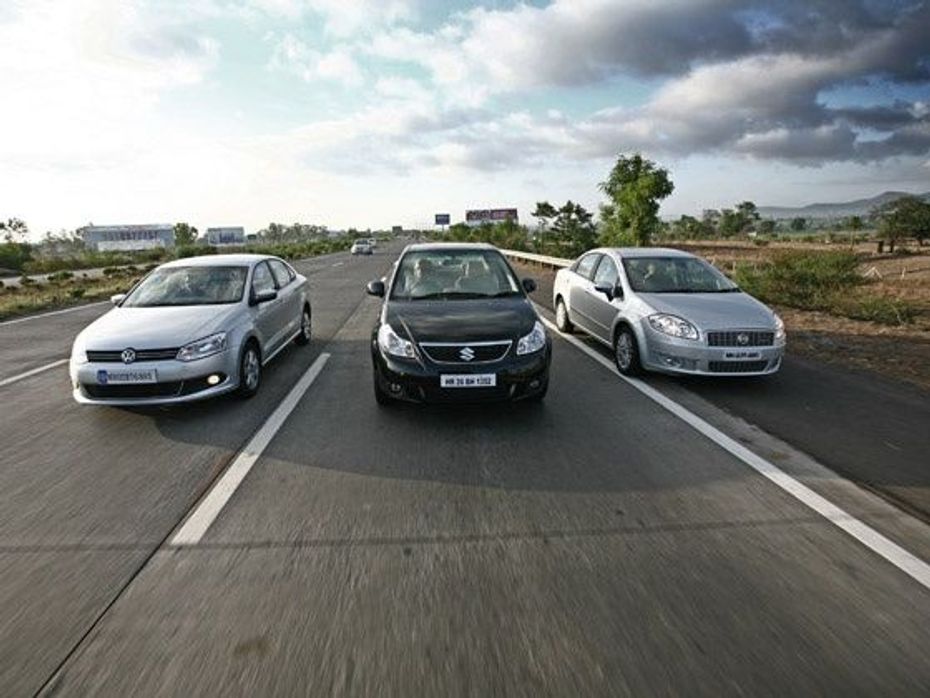
A question of image
To the outsides first. All three cars have been around for quite a while, but lined up one against another it is easy to see which car would appeal to what sort of buyer. Classical lines with a good dose of stylish details, the Linea remains a good looker that would appeal to most tastes. There are a few unflattering bits like the plastic grille upfront, but this is definitely not a car one would mind being seen stepping out of. The Maruti Suzuki SX4 on the other hand looks like it was built for India from the word go. That's because, well, it was. It carries a decided tall-boy air around itself, which has been cleverly disguised by bulging fenders and aggressive cues. It makes no excuses about being classy or elegant, but it makes up for it with an unconventional and bold approach to design, which Indian streets have now warmed up to. The Vento, finally, looks like a million bucks. Despite being made just for India and Russia, the Vento has the maximum Euro-appeal to it through its style – even more than the Linea. In fact, the harmonious proportions, rakish windscreen and taut, swept back lines are something that even the Linea's Italian designers could take a leaf out of.
Speaking of interiors, none of the three cars manage to impress, unfortunately. The Linea has too much happening on the centre console, while both the SX4 and the Vento have too little. The quality of materials used in the Vento though is impressive, and falls well in line with the car’s upmarket European appeal. Build quality all-round is also better on the German sedan as compared to the other two cars. A case has to be made though for the SX4’s seats, which are cushy, comfy and well designed for the drivers of all ages. All in all, this round of image and appeal is won by the Vento, with a decent margin.

At the wheel
The very reason for this comparison test to come around is the new engine put in the SX4, so let’s talk on powerplants for a bit. The Linea and the SX4 share the same engine, the mighty versatile 1.3-litre Multijet with a VGT turbocharger to bump up power in the range of a suitable 90PS and torque around 200Nm for the larger sedans. The Vento’s TDI engine is higher in terms of displacement at 1.6-litres and even though power and torque figures are not significantly different on paper – at 105PS and 250Nm – it is the absolute relaxed manner in which the car is pushed forward with pace that makes all the difference. While the turbo-kick in the 1.3 diesels is more overt – almost disturbingly so in the SX4 – the Vento instead just keeps rolling on, often irrespective of the gear you’re in. In terms of the engine and performance, the Vento shines through.
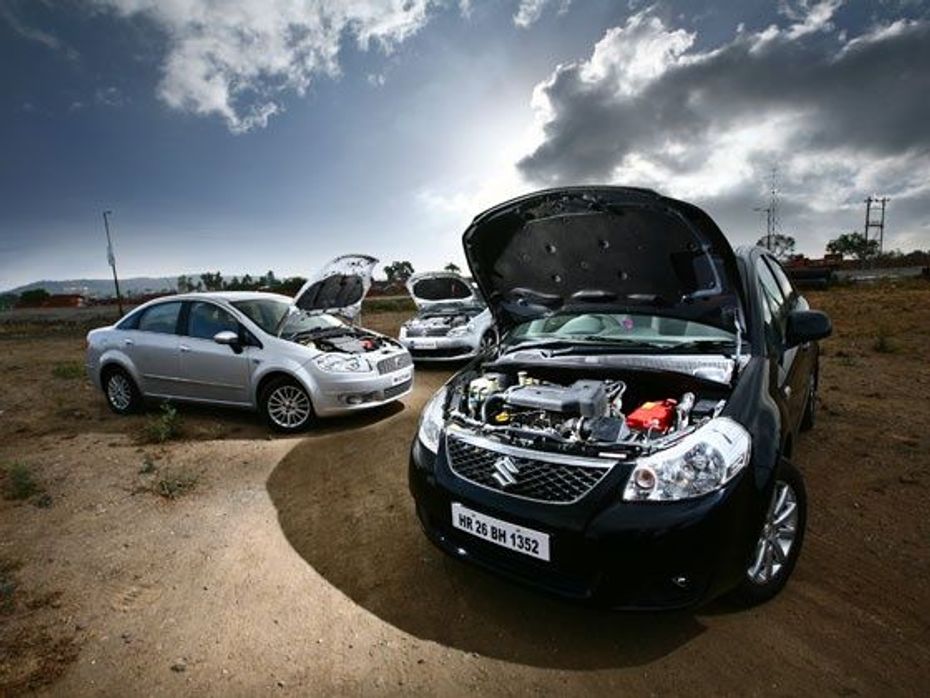
When it comes to the drive experience though, both the German engine and the car feel way more hardcore, and we don’t necessarily mean that in a good way. The clutch is worth building muscles with and the gear shifts positive but hard. Handling is composed, and the chassis communicative, but only as long as the road surface is good. The Linea may not have the stonk, but the drive experience is more welcoming and feel from all the controls is much more pleasant. The steering feels well-weighted, but some may find it a little too demanding in terms of effort during parking etc. If it’s not about the kicks of diesel-torque acceleration, the Linea remains a great car to drive, around the city and elsewhere.
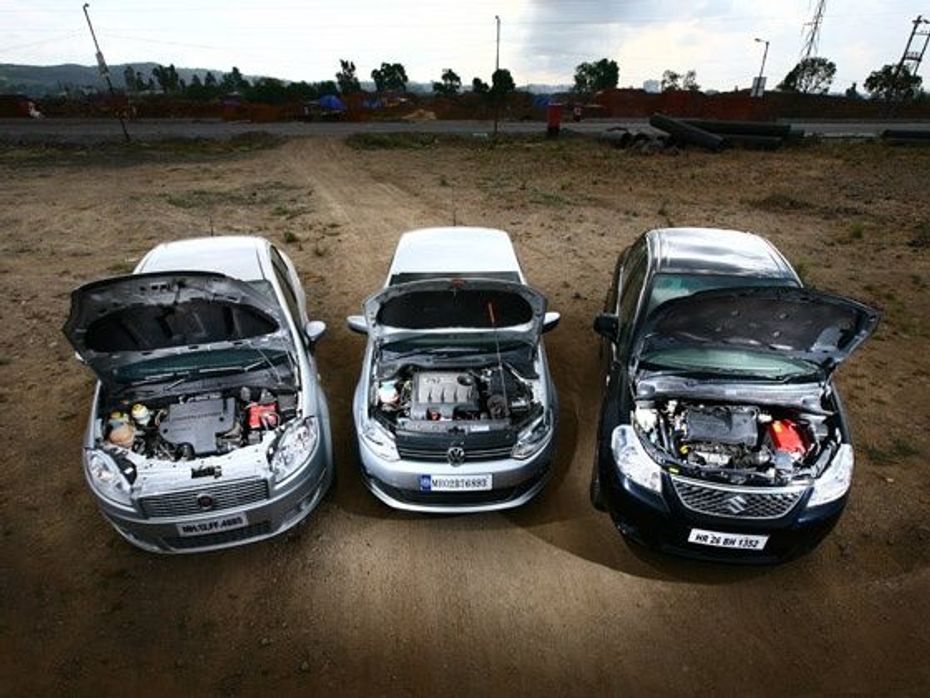
And then we come to the SX4, to be pleasantly surprised. No matter how many times we have been taken aback by the Japanese carmaker’s understanding of the Fiat diesel, and its ability to tune it almost perfectly to Indian conditions, the sheer difference between the application of the engine on the Linea and the SX4 remains startling. Easily the most refined diesel of the lot, it also feels significantly more sprightly especially during city overtakes. The steering feel is really easy, not requiring much effort – enthusiastic drivers may not like this much but it’s quite a boon around town. While the car feels much less confident going around corners thanks to its soft suspension and tall dimensions, but as a city drive-around, it excels in all departments.
Along for the ride
Rear bench comfort is an important factor for the segment, given that few cars in here are ever bought to be driven alone, or with just the front two seats occupied. In this respect, the Vento’s stiff ride quality hurts its chances. While the ride itself is well damped and space at the rear is more than that in the SX4 and the Linea, the car begins to show its high-brow when the going gets rough. The Linea on the other hand manages the balance between handling and ride quality rather well, offering enough feedback to the enthusiastic driver yet keeping the occupants unruffled through bad roads. Headroom at the rear though has been sacrificed for the swoopy C-pillar, and with the more airy cabins of its rivals, the rear seat in the Linea suddenly begins to seem less attractive. From the passenger’s point of view alone though, the SX4 diesel offers one of the plushest rides in its class, soaking in bumps and undulations with aplomb. The choice of spring stiffness and damping rates is spot on, and the result comes very close to a magic carpet ride. Once again, Maruti’s understanding of Indian conditions and the demands of its users manages to trump the European duo.
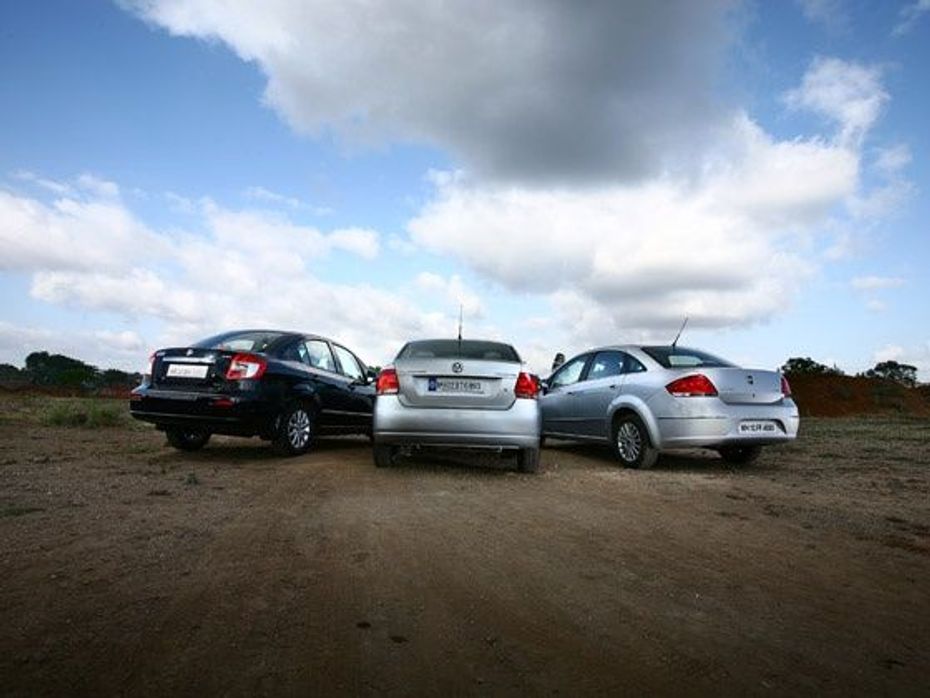
Verdict: A matter of taste
While they may share the common trait of being diesel-powered compact sedans, the three cars going head-to-head remain distinctly different, offering totally unique experiences of driving and being driven in. The Fiat Linea Multijet has now been around for long enough to establish an enviable street-cred, and remains a car that does almost everything well – from looking good to driving exceptionally, right through to offering a comfortable ride quality for all occupants – and offering all of this at a price point that undercuts the competition significantly, making it the best value-for-money proposition in this lot. The Linea remains your do-it-all diesel sedan, and has good days ahead so long as its makers keep reminding the forgetful market about how good their car really is.
Maruti Suzuki SX4 Diesel
The Volkswagen Vento TDI is the classiest of the lot, has stonking performance when compared to its rivals and easily feels like the most well-built car this side of Rs 10 lakh. With just two choices of trim levels (of which the base variant is low on features), one gets a feeling of being taken for granted. That being said, in its Highline variant, the Vento is set to become the diesel sedan of choice for classy buyers for whom image is an important part of the game – and the car very well offers most things one would want at its price. And yes, we did mention that it is an absolute, total hoot to drive, right? For all that though, connoisseurs will have to shell out an extra lakh of rupees compared to the Linea, and half a lakh more in contrast to the SX4. It’s a great car, but it shows its value in very subtle ways which the market may not be able to notice or appreciate.
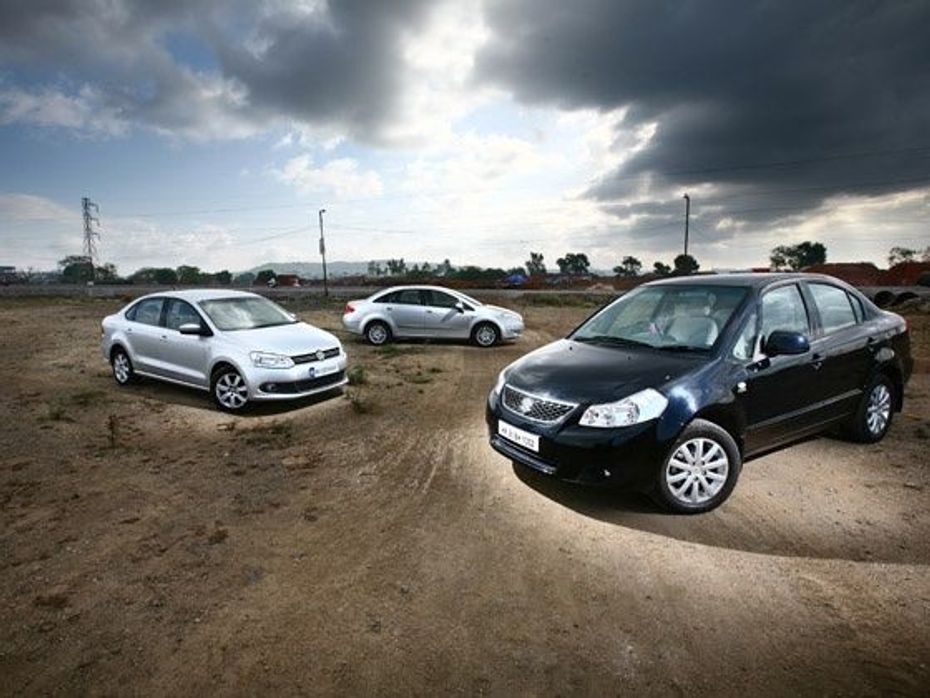
But ultimately, it is the Maruti Suzuki SX4 diesel that accomplishes something neither of its two competitors manage convincingly – understanding what the majority wants. It remains a ‘made-for-India’ product, and delivers accordingly. It does not try too hard to exude an air of affluence, does not attempt to drill or sell an image, and makes no bones about being a fantastic driver’s machine. What it does instead is offer significantly better levels of refinement, a very accessible and welcoming drive for the person at the wheel, and a higher feeling of well-being in the cabin, all-round. For the sensible buyer who still looks at a diesel sedan as a daily-use product and not as fulfillment of an aspiration, the SX4 diesel gets our thumping vote, and an added tip of the hat for being the most real-world oil-burning sedan around.

Fiat Cronos Revealed

Fiat Cronos Teased, To Replace Linea

Goodbye Linea, Hello Fiat Cronos!

2016 Auto Expo: Fiat showcases more powerful Linea 125S

Fiat Linea Elegante limited edition launched at Rs 9.99 lakh

Next generation Fiat Linea spied undergoing tests

Next-generation Fiat Linea spied

New Fiat Linea launched at Rs 6.99 lakh

New Fiat Linea to be launched in 2014
 Mahindra Scorpio N
Mahindra Scorpio N
 Royal Enfield Classic 350
Royal Enfield Classic 350
 Toyota Fortuner
Toyota Fortuner
 Royal Enfield Hunter 350
Royal Enfield Hunter 350
 Hyundai Creta
Hyundai Creta
India's largest automotive community
 Maruti Brezza
Rs. 8.34 Lakh
Maruti Brezza
Rs. 8.34 Lakh
 Maruti FRONX
Rs. 7.51 Lakh
Maruti FRONX
Rs. 7.51 Lakh
 Maruti Grand Vitara
Rs. 10.99 Lakh
Maruti Grand Vitara
Rs. 10.99 Lakh
 Mahindra Scorpio
Rs. 13.61 Lakh
Mahindra Scorpio
Rs. 13.61 Lakh
 Toyota Innova Crysta
Rs. 19.99 Lakh
Toyota Innova Crysta
Rs. 19.99 Lakh